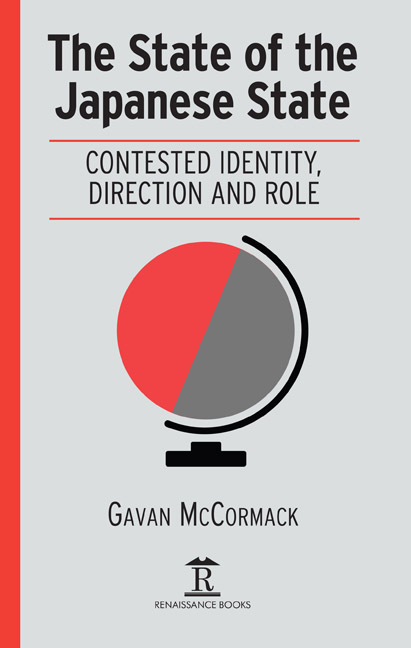Book contents
- Frontmatter
- Contents
- Preface
- Chapter 1 The Improbable Package
- Chapter 2 The Client State
- Chapter 3 The Client State’s Client State
- Chapter 4 Okinawa – State Violence and Civic Resistance
- Chapter 5 Around the East [China] Sea
- Chapter 6 The Construction State
- Chapter 7 The Constitutional State
- Chapter 8 The Rampant State
- Chapter 9 Conclusion
- Afterword
- Index
Preface
Published online by Cambridge University Press: 04 May 2022
- Frontmatter
- Contents
- Preface
- Chapter 1 The Improbable Package
- Chapter 2 The Client State
- Chapter 3 The Client State’s Client State
- Chapter 4 Okinawa – State Violence and Civic Resistance
- Chapter 5 Around the East [China] Sea
- Chapter 6 The Construction State
- Chapter 7 The Constitutional State
- Chapter 8 The Rampant State
- Chapter 9 Conclusion
- Afterword
- Index
Summary
As this book goes to press early in 2018, Abe Shinzo, in his 7th year (6th of his second term) as Prime Minister, enjoys a super (two-thirds) majority in the Diet and can contemplate political dominance likely to extend through the inauguration of a new imperial regime in April 2019, the Tokyo Olympic Games of 2020, and a revised constitution (most likely in 2021) before retiring, possibly in glory, some time in 2021. I find myself pondering how and why the Abe state is so successful, despite an ideological agenda for which it is difficult to detect mass support, and how it is able to project a generally positive image internationally while choosing to give unconditional support to the Donald Trump regime that is the butt of such general international opprobrium. From what roots did it grow? How secure is the democratic project?
In contemplating the puzzle of the Japanese state, I set two markers, first going back seven decades to the “creation” – the arrangements imposed on the country by the post-war allied (mostly US) occupation, the constitution of 1946 and the San Francisco Treaty arrangements of 1951, out of which grew a peculiar dependence, maturing through subsequent decades into today's fully-fledged “client state” relationship, and later focussing on the enthusiastic and unconditional Abe embrace for the crass, capricious, and xenophobic United States of Donald Trump. I use the term “Client State” (that I first adopted in 2007) alongside others such as “construction state” and “constitutional state” (though the latter in a primarily ironic sense), and discuss other aspects under the heading “rampant state,” but I am at a loss to find an encapsulating word to convey the Abe state's combination of clientelism – its structured and chosen submissiveness towards the Unitd States – and assertiveness and historical revisionism, of the kind that in other countries would be seen as extremist, or ultra-nationalist. It is this peculiar blend of contradictory qualities that I wanted to try to capture. Prime Minister Abe is well-known for “Abe-nomics,” but my focus is “Abe-politics.”
As this book circulated in draft form, one reader comment caught my eye. It was that I paid too much attention to Okinawa, which “unfortunately … is quite a small and remote part of Japan.”
- Type
- Chapter
- Information
- The State of the Japanese StateContested Identity, Direction and Role, pp. ix - xPublisher: Amsterdam University PressPrint publication year: 2018

